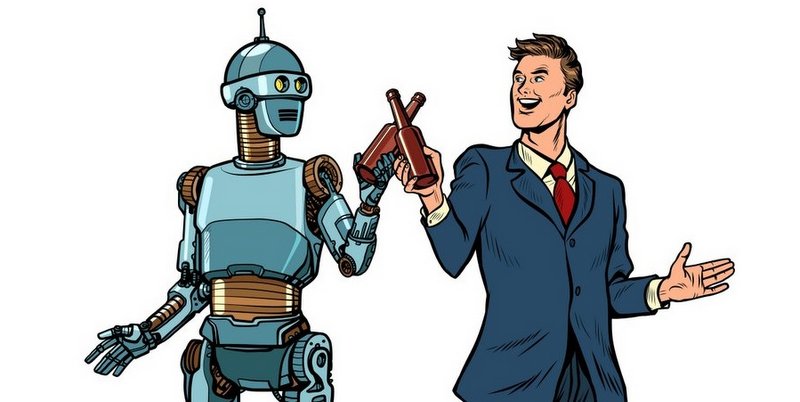
We have participated in several calls with business leaders and connected with breweries. We have heard two types of responses: 1) whew, we made it over that hurdle, now what do we do? or 2) I don’t even know what to do or where to begin. There are five stages your brewery will go through in our current environment. Or I should say, five stages your brewery CAN go through. Whether or not you make it to each subsequent stage depends on how well you complete the one prior.
Here are the five stages and what steps you can take in each stage to advance to the next.
Stage 1: Shock and stabilize
This is the “OH @#!$%&” moment. The moment your state shut down bars and restaurants for dine in service. The moment one of your employees tells you they have tested positive for coronavirus. It will happen, starting planning now. As a brewery owner, you are anticipating and planning for these situations. Watching for signs that your business is going to be impacted.
What to do in shock and stabilize: During this stage it is important to be there for your employees. Remember, they have less information and control of the situations than you do — so they will feel even more out of control. Be there for them. Communicate what you know and what you don’t know. Ask them how they are doing. Listen to them. Give them grace. Your default will be to jump to plan. Yes, AND make sure that you are there for your employees.
Stage 2: Plan
This is when you pull yourself up off the floor after the shock and start to figure out what to do next. You ask questions like: how do we continue to make money?; how can we reduce expenses; how do we need to adjust how we operate?; and what do we need to do if we need to shut down quickly?
What to do in planning: During the plan stage, it is important to engage your employees in this process. As owners, we tend to want to make the decisions, construct the plan. We do it with the best intentions. If we want to take care of our employees, we need to make sure our business is viable, but the best thing you can do for your employees and your business is to include your employees in this process. You need to harness the energy and creativity of your employees to figure out how to move forward. Provide information about the big picture. Share the impact on your brewery. Ask for ideas to minimize or reduce the impact. Listen to their ideas.
Stage 3: Implement and adjust
In implement and adjust, you are putting these actions into place. You are adjusting your menu options to make take-out easier. You are adjusting your operations to support the new way of doing business. This may include notifying employees that they are being temporarily laid off.
What to do in implement and adjust: This stage will require you to spread your focus a bit more. You will need to continue to monitor the environment to watch for any other “shocks” that would impact your brewery. Continue to engage your employees. Include them in planning for these changes and adjustments. Help your employees develop the new skills and learn the new processes as your brewery shifts. It’s their hard work that is keeping your business going (you couldn’t do it without them). Make sure they know how much you appreciate their work, their ideas, their patience. Say thank you. If you have had to temporarily lay off employees, stay connected with them. Reach out to them every few days to see how they are doing.
We have found that a majority of breweries are in stages 2 and 3. It feels like plan and implement and adjust is our new normal. CAUTION: Don’t get stuck there. It will be tempting to stay in stage 3 — to monitor and adjust, monitor and adjust. Tempting because you may be starting to feel a sense of normalcy or a sense of control. But also, we are tired. This situation has whiplashed us, stressed us out and stretched us beyond what we could have ever anticipated. We are just worn out. We are going to get through this. This too shall pass, and it will get better. I truly believe that we, as a country, as a people, will be stronger. But to do that, we can’t ease back into the way we used to do things. We need to charge into the other side prepared for bigger and better.
Stage 4: Prepare for the future

In prepare for the future, you are planning how you are going to charge into the other side. You are looking at the future of your business when these restrictions are over and how you are going to operate.
What to do in prepare for the future: Identify your business goals. Are you going to adjust your services based on your recent experience? Develop plans for ramping up. How many employees are you hiring back and when? What is your plan to get the supplies you need to open back to full service? What can you do to welcome your customers back into your taproom? How and when should you be communicating with your customers? Review your policies, procedures and practices. \What standard operating procedures do you have in place? Are they effective? Do they need to be updated or changed?
This is a perfect time to review your people strategies and human resources practices (yes, I am biased — because it is important, not just because I am an HR person). What is your current hiring process? Are you asking questions relevant to the culture of your brewery? Do you have offer letter templates? How are you onboarding new employees? Do you have regular business updates with employees? Do employees understand how what they do every day impacts the success of your brewery? Do employees feel recognized for the work they do?
Stage 5: Move forward
This is the moment we have all waited for — the moment we are on the other side. Your brewery is more effective, more efficient and more viable than it was before. When we get here, we celebrate.
I read a quote recently by Kevin Costner, “When a defining moment comes along, you define the moment or the moment defines you.” I refuse to be defined by this moment — I choose to define this moment. To use this opportunity to make myself and my business stronger. Are you with me?
Kristen Ireland is co-owner of People Spark Consulting, a human resources strategy consulting firm that works with small businesses to achieve their business goals through their culture and people strategies.





Leave a Reply
You must be logged in to post a comment.